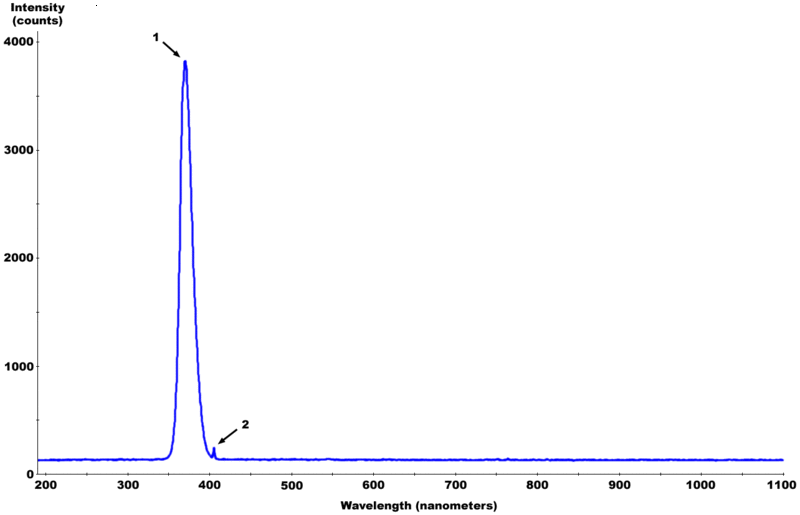Fichier:Fluorescent Black-Light spectrum with peaks labelled.gif
Fluorescent_Black-Light_spectrum_with_peaks_labelled.gif (800 × 515 pixels, taille du fichier : 13 kio, type MIME : image/gif)
Historique du fichier
Cliquer sur une date et heure pour voir le fichier tel qu'il était à ce moment-là.
| Date et heure | Vignette | Dimensions | Utilisateur | Commentaire | |
|---|---|---|---|---|---|
| actuel | 12 juin 2006 à 15:19 |  | 800 × 515 (13 kio) | KErosEnE~commonswiki | Image uploaded in en.wikipedia.org into the Public Domain by en:user:Deglr6328 Original summary: Spectrum of light from a fluorescent black light with peaks labelled. The spectrum was taken with an Ocean Optics spectrometer [http://www.oceanoptic |
Utilisation du fichier
La page suivante utilise ce fichier :
Usage global du fichier
Les autres wikis suivants utilisent ce fichier :
- Utilisation sur bg.wikipedia.org
- Utilisation sur ca.wikipedia.org
- Utilisation sur en.wikipedia.org
- Utilisation sur es.wikipedia.org
- Utilisation sur gl.wikipedia.org
- Utilisation sur hr.wikipedia.org
- Utilisation sur ja.wikipedia.org
- Utilisation sur pl.wiktionary.org
- Utilisation sur sh.wikipedia.org
- Utilisation sur sr.wikipedia.org
- Utilisation sur uk.wikipedia.org





